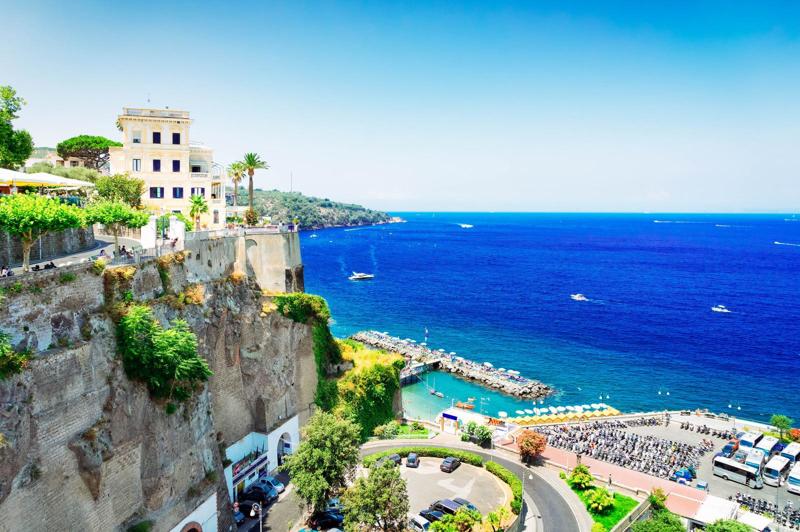Journeying through the picturesque, sun-drenched landscapes of Southern Italy is an experience to be savored. Slow Travel Southern Italy allows travelers to immerse themselves in the region’s rich culture, breathtaking scenery, and delectable cuisine at a leisurely pace. This article will explore the beauty of slow travel in Southern Italy, from the charming coastal towns of Amalfi to the hidden gems waiting to be discovered.
In this section, we will delve into what exactly slow travel entails and why Southern Italy is the ideal destination for this mindful approach to exploring. We’ll also discuss the advantages of choosing slow travel over traditional tourism, highlighting the deeper connections with local communities and environments that it fosters.
We will take a closer look at exploring the Amalfi Coast – delving into the enchanting coastal towns and villages, indulging in leisurely activities like scenic boat rides and beach days, and savoring local cuisine. With recommendations for accommodations providing local charm and comfort, travelers can fully embrace the unhurried ambiance of this stunning region.
Exploring the Amalfi Coast
The Amalfi Coast is a breathtaking stretch of coastline in Southern Italy, known for its picturesque towns, lush cliffs, and sparkling turquoise waters. Slow travelers will find that this region offers the perfect blend of relaxation, natural beauty, and authentic Italian culture. Some must-visit spots along the Amalfi Coast include:
- Amalfi: This charming town is filled with narrow streets and staircases, perfect for leisurely strolls. Visitors can also explore the striking Cathedral of St. Andrew and take in panoramic views from the Piazza del Duomo.
- Positano: Known for its pastel-colored buildings cascading down the cliffside, Positano is a great place to unwind with a beach day or enjoy local cuisine at seaside restaurants.
- Ravello: Perched high above the coast, Ravello offers stunning vistas of the Mediterranean Sea. Visitors can wander through its elegant gardens and historic villas.
Recommended accommodations along the Amalfi Coast include boutique hotels, bed and breakfasts, and family-run guesthouses that provide an intimate experience with local hospitality. Additionally, slow travelers can indulge in traditional cuisine such as fresh seafood dishes like spaghetti alle vongole (spaghetti with clams) or savor limoncello while taking in sunset views.
While on the Amalfi Coast, slow travelers can participate in activities that allow them to immerse themselves in nature and local culture. Leisurely walks along coastal paths or scenic boat rides provide an opportunity to appreciate the beauty of this region at a relaxed pace.
Immersing in Local Culture
As one immerses in the local culture of Southern Italy, it becomes clear that connecting with the locals is an essential aspect of slow travel. Delving into authentic experiences, such as attending traditional Italian cooking classes or local festivals, allows travelers to gain a deeper understanding of the region’s rich heritage. By engaging with the Italian language and customs, visitors can develop meaningful connections with the community, fostering a more enriching travel experience.
Learning the Italian language and familiarizing oneself with local customs is not only beneficial for communication but also showcases respect for the host culture. Whether it’s picking up common phrases to interact with locals or understanding age-old traditions and social practices, embracing these aspects will undoubtedly enhance one’s journey through Southern Italy. Additionally, interacting with residents allows for valuable insights into daily life and local perspectives on various cultural aspects.
While engaging in this deep dive into local culture may seem intimidating, it can be incredibly rewarding. What better way to truly understand a destination than by learning from its people? By participating in activities that are popular among local residents, travelers have the opportunity to create lasting memories and impact both their personal growth and appreciation for Southern Italy’s unique way of life.
| Benefit | Example |
|---|---|
| Cultural Understanding | Attending a traditional Italian cooking class |
| Personal Growth | Engaging in authentic local experiences like learning about ancient customs |
| Mutual Respect | Picking up common phrases of Italian language as a sign of respect for locals |
Discovering Hidden Gems
Off-the-beaten-path towns and villages
Southern Italy is home to numerous charming, lesser-known towns and villages that are perfect for those looking to escape the crowds and immerse themselves in authentic Italian culture. From the cliffside town of Polignano a Mare in Puglia to the medieval village of Vico del Gargano in Apulia, these hidden gems offer a glimpse into traditional Italian life without the touristy hustle and bustle.
Exploring these off-the-beaten-path destinations allows travelers to truly connect with the local way of life and gain a deeper understanding of the region’s rich history and heritage.
Lesser-known attractions and landmarks
In addition to hidden towns and villages, Southern Italy boasts a wealth of lesser-known attractions and landmarks that are often overlooked by traditional tourists. From ancient ruins to secluded beaches, these hidden treasures offer unique experiences that go beyond the typical tourist trails.
Whether it’s exploring the unspoiled beauty of Calabria’s Aspromonte National Park or discovering the historic charm of Matera’s Sassi di Matera, there is no shortage of hidden gems waiting to be uncovered in Southern Italy.
Insider tips for accessing these hidden gems
While discovering hidden gems can be exciting, it often requires some insider knowledge and guidance. Travelers interested in uncovering Southern Italy’s best-kept secrets should consider seeking out local recommendations, consulting travel blogs or forums, or even hiring a knowledgeable guide who can lead them off the beaten path.
By taking the time to research and plan their itinerary with an emphasis on exploring lesser-known destinations, travelers can ensure that their slow travel experience in Southern Italy is filled with unforgettable discoveries and authentic encounters.
Embracing the Slow Food Movement
The Slow Food Movement originated in Italy, making Southern Italy the perfect destination for embracing this culinary philosophy. This movement focuses on promoting local and traditional food production, as well as preserving regional cuisine and gastronomic culture.
Visitors to Southern Italy can fully immerse themselves in the Slow Food experience by visiting local markets, farm-to-table restaurants, and vineyards. By supporting these establishments, travelers not only enjoy delicious and authentic meals but also contribute to the sustainability of the local food system.
One of the most enjoyable aspects of embracing the Slow Food Movement in Southern Italy is the opportunity to sample local delicacies and traditional dishes. Each region of Southern Italy offers its own unique flavor palette, from fresh seafood along the Amalfi Coast to hearty pasta dishes in Puglia.
Visitors can savor authentic flavors by participating in organized tastings or simply by dining at locally-owned restaurants. Additionally, many towns and cities host food festivals throughout the year, showcasing an array of regional specialties.
When it comes to planning a trip centered around the Slow Food Movement, visitors should consider staying at accommodations that prioritize sustainable and locally-sourced ingredients – a key aspect of Slow Food principles. In addition to supporting eco-friendly businesses, travelers are encouraged to educate themselves on the origins of Southern Italian cuisine and how it has shaped local communities.
By engaging with locals who continue to produce and preserve traditional foods, visitors can gain a deeper appreciation for the region’s culinary heritage.
| Slow Food Movement Essentials | Benefits |
|---|---|
| Supports local farmers and small-scale producers | Preserves regional cuisine and culture |
| Emphasizes sustainability and environmental consciousness | Provides authentic gastronomic experiences |
| Promotes community engagement through food-related events | Contributes to responsible tourism practices |
Engaging in Sustainable Tourism
Slow travel in Southern Italy goes beyond just experiencing the local culture and cuisine; it also focuses on practicing sustainable tourism. By engaging in sustainable tourism practices, travelers can minimize their negative impact on the environment and support the well-being of local communities.
Here are some ways to engage in sustainable tourism while exploring Southern Italy:
– **Reduce carbon footprint**: Consider using public transportation, cycling, or walking instead of driving or taking a taxi. This not only reduces your carbon footprint but also allows you to embrace a more immersive experience as you explore the local surroundings.
– **Support eco-friendly accommodations**: Choose to stay in eco-friendly accommodations that prioritize energy efficiency, waste reduction, and conservation efforts. Many hotels and guesthouses in Southern Italy have adopted sustainable practices such as solar power, water-saving initiatives, and organic gardening.
– **Respect local customs and traditions**: When interacting with locals, it’s important to be respectful of their customs and traditions. This could mean dressing modestly when visiting religious sites, supporting artisanal crafts made by local artists, or learning about the cultural significance of certain practices.
By implementing these sustainable tourism strategies during your slow travel journey in Southern Italy, you can contribute to the preservation of the region’s natural beauty and cultural heritage while fostering positive relationships with the local community.
Unwinding in the Countryside
When it comes to slow travel in Southern Italy, there’s no better way to truly embrace the concept of taking things slow than by unwinding in the serene Italian countryside. The countryside offers a peaceful escape from the hustle and bustle of city life, allowing travelers to connect with nature and experience the authentic beauty of rural Italy.
Relaxing in the serene Italian countryside is a wonderful way to recharge and rejuvenate the mind, body, and soul. Whether you’re strolling through rolling vineyards, admiring ancient olive groves, or simply enjoying the tranquility of the landscape from a picturesque hilltop villa, the countryside provides a sense of calm and tranquility that is perfect for slowing down and appreciating life’s simple pleasures.
Participating in agritourism activities is another fantastic way to immerse yourself in the local culture while unwinding in the countryside. Many agriturismo properties offer experiences such as olive oil or wine tastings, giving travelers an opportunity to learn about traditional Italian agricultural practices while enjoying delicious local products. Additionally, leisurely hikes and picnics in nature provide unique opportunities to savor the stunning scenery and indulge in the joys of outdoor living.
Overall, unwinding in the countryside during a slow travel trip to Southern Italy allows travelers to fully embrace a relaxed pace of life while immersing themselves in the natural beauty and cultural traditions of rural Italy. By taking time to appreciate these simple yet meaningful experiences, travelers can gain a deeper understanding and appreciation for this enchanting region.
Conclusion
In conclusion, Southern Italy offers a perfect destination for slow travel, allowing visitors to immerse themselves in the region’s culture, landscapes, and cuisine. From the stunning Amalfi Coast to hidden gems and sustainable tourism practices, there are plenty of opportunities to embrace a slower, more mindful approach to exploration. By engaging with locals, supporting eco-friendly businesses, and indulging in the Slow Food movement, travelers can have a deeply enriching experience that goes beyond traditional sightseeing.
As we reflect on the benefits and experiences of slow travel in Southern Italy, it becomes clear that this approach not only allows for a deeper connection with the destination but also has a positive impact on the environment and local communities. Embracing sustainable tourism practices and supporting small businesses can contribute to preserving the authenticity of the region while minimizing the negative effects of mass tourism.
Therefore, I encourage readers to consider planning a slow travel trip to Southern Italy as an opportunity for a more meaningful and responsible travel experience.
For those interested in embarking on a slow travel journey through Southern Italy, there are many resources available for planning such a trip. From agritourism accommodations to local guides who specialize in authentic experiences, there is no shortage of ways to make your trip both enjoyable and beneficial for the region. By taking advantage of these resources and embracing the ethos of slow travel, visitors can create memories that will last a lifetime while contributing positively to Southern Italy.
Frequently Asked Questions
How long do you need in southern Italy?
The amount of time needed in southern Italy really depends on the specific places you want to visit and the experiences you want to have. If you’re looking to explore just a few cities like Naples, Sorrento, and the Amalfi Coast, a week or two could be sufficient.
However, if you want to truly immerse yourself in the culture, history, and cuisine of the region, a longer stay of 2-3 weeks would be ideal.
What is the best way to get around southern Italy?
The best way to get around southern Italy is by a combination of train, bus, and car. Trains are efficient and connect major cities like Naples, Salerno, and Bari.
Buses are great for reaching smaller towns not accessible by train. If you’re planning on exploring the Amalfi Coast or Puglia region, renting a car would be beneficial for flexibility and convenience.
How to spend 7 days in southern Italy?
Spending 7 days in southern Italy allows for a well-rounded experience of the region. You could start in Naples to explore its historic center and indulge in authentic Neapolitan pizza. Then travel down to Sorrento or explore the Amalfi Coast for stunning coastal views and charming villages like Positano and Ravello.
A day trip to Pompeii or Herculaneum would offer an immersive ancient history experience. Finally, consider visiting Capri or Ischia for a taste of island life before ending your trip with some beach time along southern Italy’s beautiful coastline.

I’m a passionate traveler, writer, and Italophile. My fascination with Italy’s history, art, and culture has led me on countless adventures across the Italian landscape. Through “I Live Italy,” I share my love for this extraordinary country and aims to inspire others to explore its boundless beauty.





